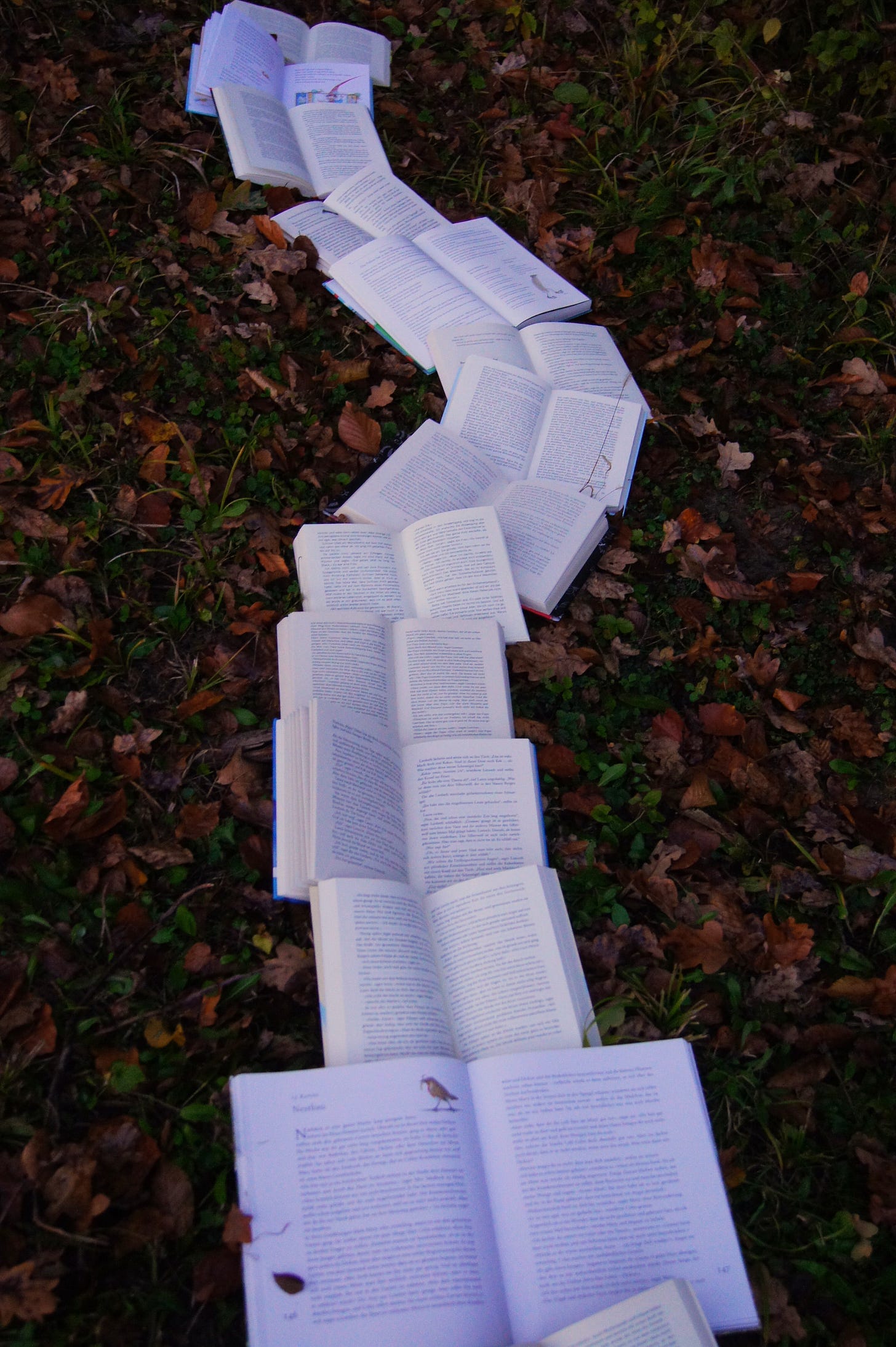3 Authors on Poetry Book Development
An inside look at how poets navigate the book-writing process
Photo by Laura Kapfer on Unsplash
As some of you know, I am healing from neck and rib fractures sustained in a bad bike accident. The good news is that I am here, typing this article for you, excited to continue our conversation about poetry and process.
To that end, I came across two insightful articles this week. Both offer a rare look into authors’ book-development processes, how they write into and around and through poems toward a book that coheres in content and form.
The development process behind a single poem is hard enough to articulate. Harder still to explain the process of writing an entire book. As Ada Limón reflects, “Everyone makes books differently, everyone makes poems differently. There is no one way, no right way, only the way that brings you pleasure, the way that lets all the poems vibrate and pulse within the pages.” Each book we write demands a different process, as well (see the Hopler and Johnson interview excerpts, below).
Usually we can only say what happened—what worked—in retrospect. But these two articles, I think, point toward proactive approaches that might help us to avoid exhausting our creative focus by squirreling around in haphazard work.
Ada Limón on building a "cohesive, crafted, and well attended” collection
“I used to think that making books of poems was about collecting everything I had ever written and then cutting things out. But this is not entirely true.”
“I begin with poems that matter to me, that feel important somehow. I call these the ‘anchor’ poems. From there, I begin to build on these anchor poems. I look to see which poems talk to those ‘anchor’ poems, even if it’s to disagree or contradict — at least they are in conversation."
“To take prompts from my own work, my own life. To imagine what the book needs, is to imagine what I need, is to imagine what poem I have been avoiding or might not have written because I deemed it an unimportant image to explore.”
“I want to feel like the book is meaningful to me, that it matters to me. When I’ve made something that resonates with me as the poet, as the human behind the work, then I begin to share it with my dear first readers. By the time I’m ready to send it out, I want the book to feel cohesive, crafted, and as well attended to as one long poem.”
Poets Jay Hopler and Kimberly Johnson on “wildness and containment”
Johnson: “My books to this point have fallen comfortably within the lyric mode … each mostly spoken from the position of a lyric I that wasn’t necessarily me—that I pretty insistently understood not to be me. I feel like Fatal [my most recent book] is, first of all, more narrative, which was a feature that I pursued on purpose…. I was more willing to include autobiographical details in the poems themselves than I had done previously.… When I began work on the book it was almost an intellectual challenge for me, an exploration of the generic differences between lyric and narrative modes of poetry, but as the book progressed and the stories drew more and more from my own lived experience, it stopped being a merely intellectual proposition and started to seem more like bearing witness. That was a disorienting development for me, distinct from my prior method of writing poems.”
Hopler: “The forms in this book range all over the place. My first book, Green Squall, was pretty much all free verse, and my second book, The Abridged History of Rainfall, contained some free verse poems and a few poems in inherited forms—a triolet, a double triolet, for example. Still Life is very formal; there are very few free verse poems in this book. But these new poems work with form in weird ways. I was far more open to experimentation in this book than I was in any of my previous books.”
Read the full articles here and here.
Do any of their approaches resonate with you? Why or why not?





Firstly, I hope you recover soon. That all sounds extremly uncomfortable and painful. 🙏🏻
As for connections... I probably connect with Ada Limón's methodology the most. I've yet to publish a complete collection. However, I did try several years ago during my first run with college to self-publish a book through Amazon's CreateSpace platform. Needless to say, the resulting product was good enough for a coffee table, but not for the shelves of a bookstore.
That said, I'm literally a thought dumper when it comes to writing my poetry. There never is a cohesive theme in my mind at the time of writing (mostly passing idealizations). All of which have accumulated over the last couple years, and I'm only now trying to hunt through all my Google Doc files and ramblings inside notebooks, to uncover context for what I would consider my first collection.
In all that contemplation, I'm like Ada in that I'm only now searching for what makes sense together.
On the other side of the coin, however, I firmly believe that not all poetry collections need to have one cohesive theme. Call me a rebel, but I'm sure most truly creative thinkers can relate to this thought.
Ada Limon's comments are tremendously helpful. Building out from "anchor poems" makes so much sense. Much appreciated.